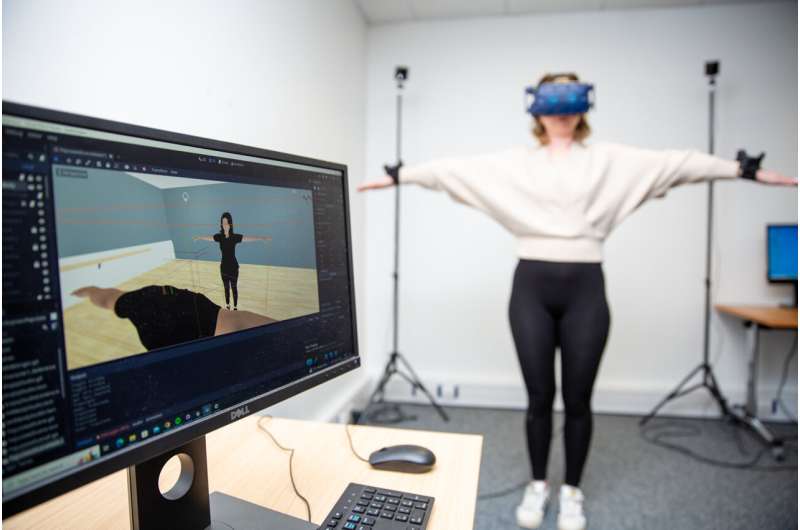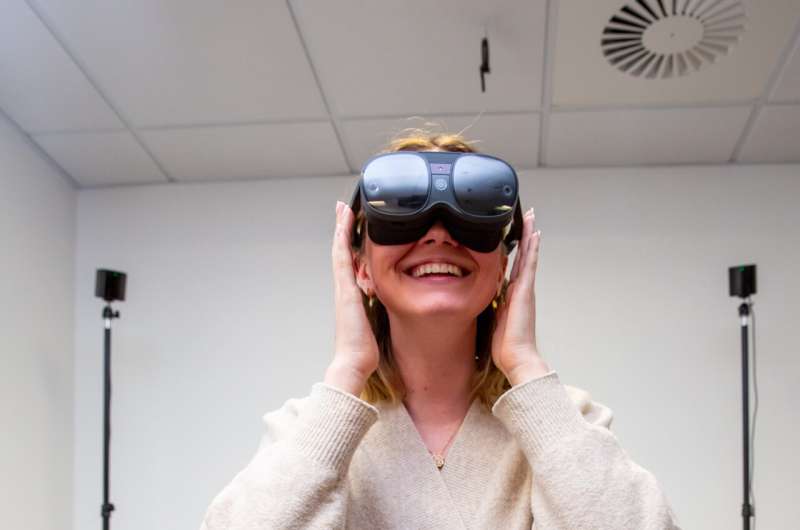This article has been reviewed according to Science X's editorial process and policies. Editors have highlighted the following attributes while ensuring the content's credibility:
fact-checked
trusted source
proofread
Customizing avatars to look more like you improves learning in virtual environments

Learning a new skill using VR works better if your virtual instructor is customized to look more like you, according to research by the University of Bath. The study suggests that even minimal customization can make a difference in how well people learn in a virtual environment.
Virtual reality is increasingly used by lots of industries to train staff, particularly where training in person is not practical, such as in dangerous environments or in health and safety scenarios. It's also used for training fine motor skills such as in manual assembly lines.
These systems often use virtual instructors with a human shaped gender-neutral avatar, or only one or two options for avatar customization.
Previous research by psychologists suggests that people learn better from trainers who are similar to them, so researchers from REVEAL, the research center for immersive technology at the University of Bath, decided to investigate whether any effect could be seen with avatars with only basic customization.
In their study, 97 volunteers learned beginning dance moves from avatars either on a screen or using a VR headset. They learned two routines—in one, participants could choose an avatar with similar physical characteristics to them, such as hair color, gender and skin tone.
Participants also learned a second routine from an avatar that had different gender and physical characteristics from themselves.
The participants were then asked to rate how well they could imagine the different dance moves after the session and rate how physically similar they felt they were to the avatar instructor. The researchers also conducted interviews with some of the participants to understand how well they related to the avatars tested.
They found that on average, the participants' ability to imagine doing the dance moves was much more vivid when the moves had been demonstrated by an avatar that looked similar to them.

They also found that the effect was larger when training using VR rather than watching a TV screen, as the experience was more immersive and participants had greater depth perception and different viewpoints compared with learning from a screen.
Izzy Fitton, a final year Doctoral student at the Center for Digital Entertainment and REVEAL at the University of Bath, was first author on the study. She said, "Being able to pick an avatar with the same gender seemed to make the biggest difference, with most females preferring a female avatar.
"Other customizations to physical characteristics, such as a beard or similar hairstyle or skin tone, were also important to many of the participants. Our study shows that even minimal customization to increase representation could make a big difference in improving effectiveness of training programs run in a virtual learning environment."
The researchers plan to investigate whether customizing avatars also makes a positive difference when learning fine motor skills, which could be useful when training factory workers on manual assembly lines.
The research was presented at the ACM (Association of Computer Machinery) CHI (Computer-Human Interaction) Conference in Hamburg, Germany in April.
More information: Isabel Fitton et al, Dancing with the Avatars: Minimal Avatar Customisation Enhances Learning in a Psychomotor Task, Proceedings of the 2023 CHI Conference on Human Factors in Computing Systems (2023). DOI: 10.1145/3544548.3580944





















